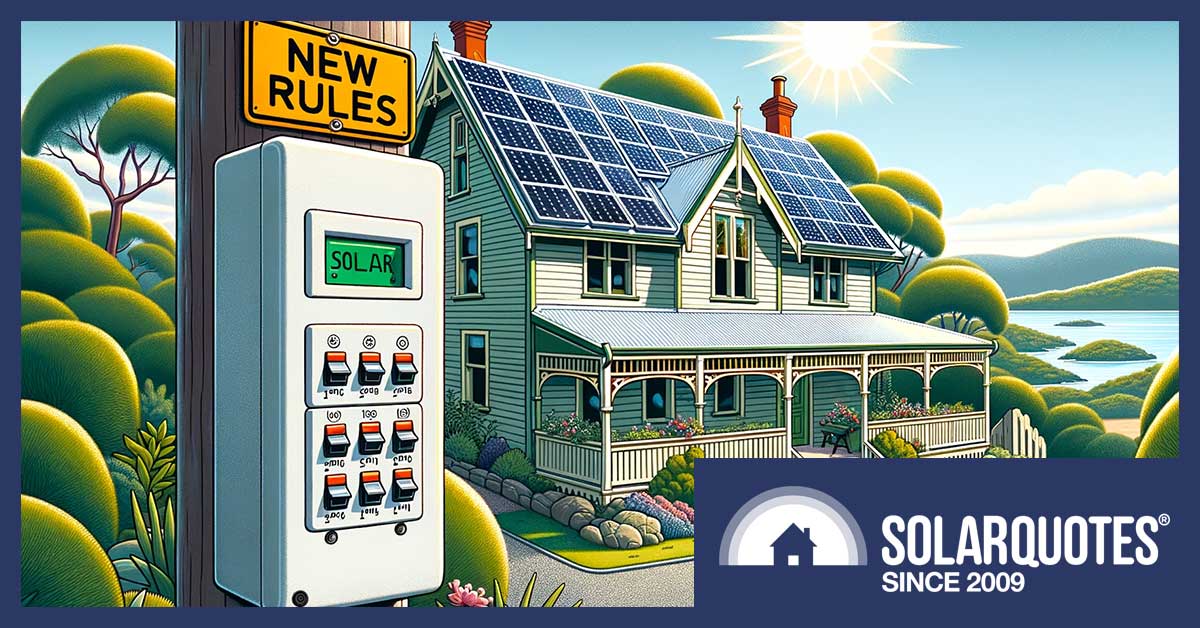
Attention, Tasmanians looking to invest in solar energy: the Tasmanian Metering Code of Practice has undergone changes and is now strictly enforced, which could hit your wallet hard.
If your switchboard isn’t up to the latest standards, you’ll need to shell out for an expensive upgrade. But don’t fret—there’s a way to sidestep this costly hurdle. Read on to find out how you can work the system and request a new meter before installing solar panels.
Special thanks to DMS Energy for raising this subject recently.
The Tasmanian Metering Code of Practice has undergone changes that will have a ripple effect on solar power system installations. Whether you’re an electrical contractor, solar installation subcontractor or solar end user, the updated standards will mean if you have an old switchboard then some more care and probably money is required to get everything up to snuff. Here’s a guide on what’s changed and what you should look out for.
The New Rules And Their Impact
Since May, wooden switchboard enclosures must now meet higher fireproofing standards. Techsafe Inspectors are cracking down on solar installations that don’t comply with the new Tasmanian Metering Code of Practice. If your installation is found to be defective, a Notice of Defective Installation (NDI) will be issued.
The Burden On Electrical Subcontractors
Here’s the kicker: once an NDI is issued, it’s illegal to charge for any remedial work. The responsibility falls squarely on the electrical subcontractor (subbie) who issued the Certificate of Electrical Compliance. That means the subbie could end up footing the bill for any required upgrades, not necessarily the retailer who sold you the system. So, if you’re a subbie, make sure you’re quoting the right upgrades to avoid any nasty surprises.
Electricians don’t want to be doing major switchboard upgrades for free, and customers shouldn’t think it’s a good outcome either because they’ll likely get the bare minimum, delivered in a rush.
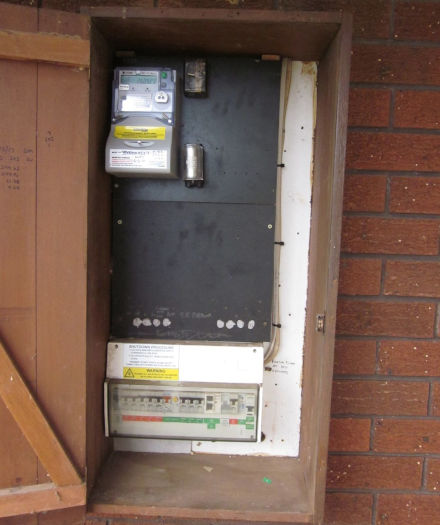
A perfectly neat and serviceable Tasmanian switchboard. Note the 8 grey caulked holes in the meter panel. Image credit: Adrian Luke
CBOS Clarification: Not All Installs Affected
Tasmania’s Consumer, Business & Occupational Services (CBOS) have confirmed that these rules only apply when a meter is physically changed. If the house already has a remote-read meter, standard procedures are all you have to worry about – namely blaze braking, where holes and penetrations are closed up and filled with intumescent sealant to prevent fire propagation.
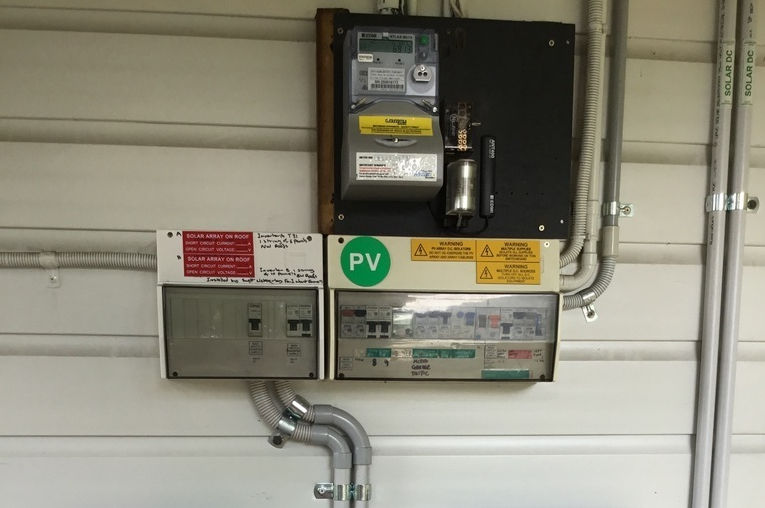
This install looks quite neat, but these days Techsafe Tasmania may not agree. credit I Want Energy.
Skirting The Rules: Retailers Are Exempt
Call me a cynic, but it’s unsurprising the major electricity industry players aren’t obliged to play by the same rules. As we have outlined in past articles detailing experiences in other states, if your electricity retailer instigates the meter changeover, no major work like fireproofing or asbestos removal is required.
The hypocrisy is galling because it’s obviously not about safety when energy retailers are exempt from the changes.
I’m guessing the rationale driving this is that customers would be outraged if the authorities turned up with a new meter, said your house is no longer compliant, and now you’re obliged to spend thousands on switchboard work.
How To Work The System
If you want to avoid the extra costs, request a new meter from your electricity retailer before you go solar. If the request is not part of a solar installation, the retailer will usually organise the new meter within 15 days, without requiring major work like fireproofing or asbestos removal. Once the new meter is installed, you can add solar panels and batteries.
I’ve seen this happen in houses that really should have had a full-service upgrade and new meter position. I mean, it’s amusing when you find a new meter in the laundry on a non-compliant screwed wooden board fed with undersized 6mm² cables.
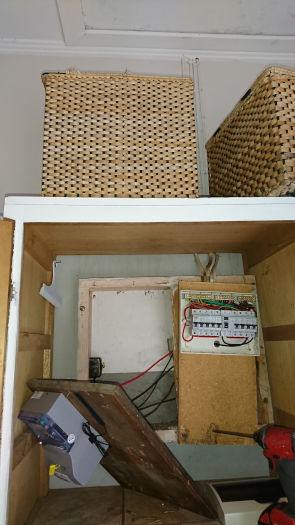
Shiny new meter stuck in a laundry cupboard. The manhole above conceals one of the worst death traps I’ve ever encountered.
As a customer, you want these things identified and made right. As an electrician, you want to offer this service as it helps create some genuinely beneficial work such safety switches and energy management equipment, while lowering risk for all concerned.
A good solar installer will quote to rectify a dangerous switchboard as part of their solar quote.
Older Houses Need Some Love
When you have older housing stock, then there’s likely to be legacy hardware and some work required. As people’s expectations change, so does the wiring needed in the house. So, if a property has an analogue or older digital meter and the meter change request is submitted as part of the solar installation, the full suite of Tasmania’s standards will apply. Fireproofing must align with the new metering standards, including asbestos removal.
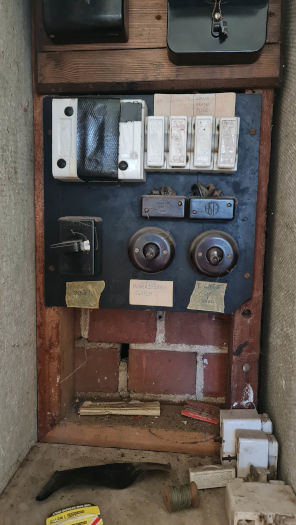
Despite the cement sheet lining, this black asbestos board must be dragged into the current century.
Use this as an opportunity to set things up for the coming century with a switchboard fit for an all-electric home. Solar, hot water management, basic home automation, energy storage, and let’s not forget EV charging will all be huge changes compared to the mechanical-time-switch level of technology available to the carpenters who built meter boxes years ago.
So, When You Need To Get Going On Solar
If your switchboard is perfectly functional and safe and you’d like to spend your budget on actual solar equipment instead of ticking boxes, then start the meter change process yourself. Just don’t mention solar—you don’t want to open that can of worms until your new remote meter is installed.
New regulations always bring challenges. But forewarned is forearmed. Stay compliant, stay updated, and check your quotes carefully.
And by the way, isn’t it a bit unfair that solar installers have to bear the burden of switchboard compliance while electricity retailers get a free pass?

 RSS - Posts
RSS - Posts



Speak Your Mind